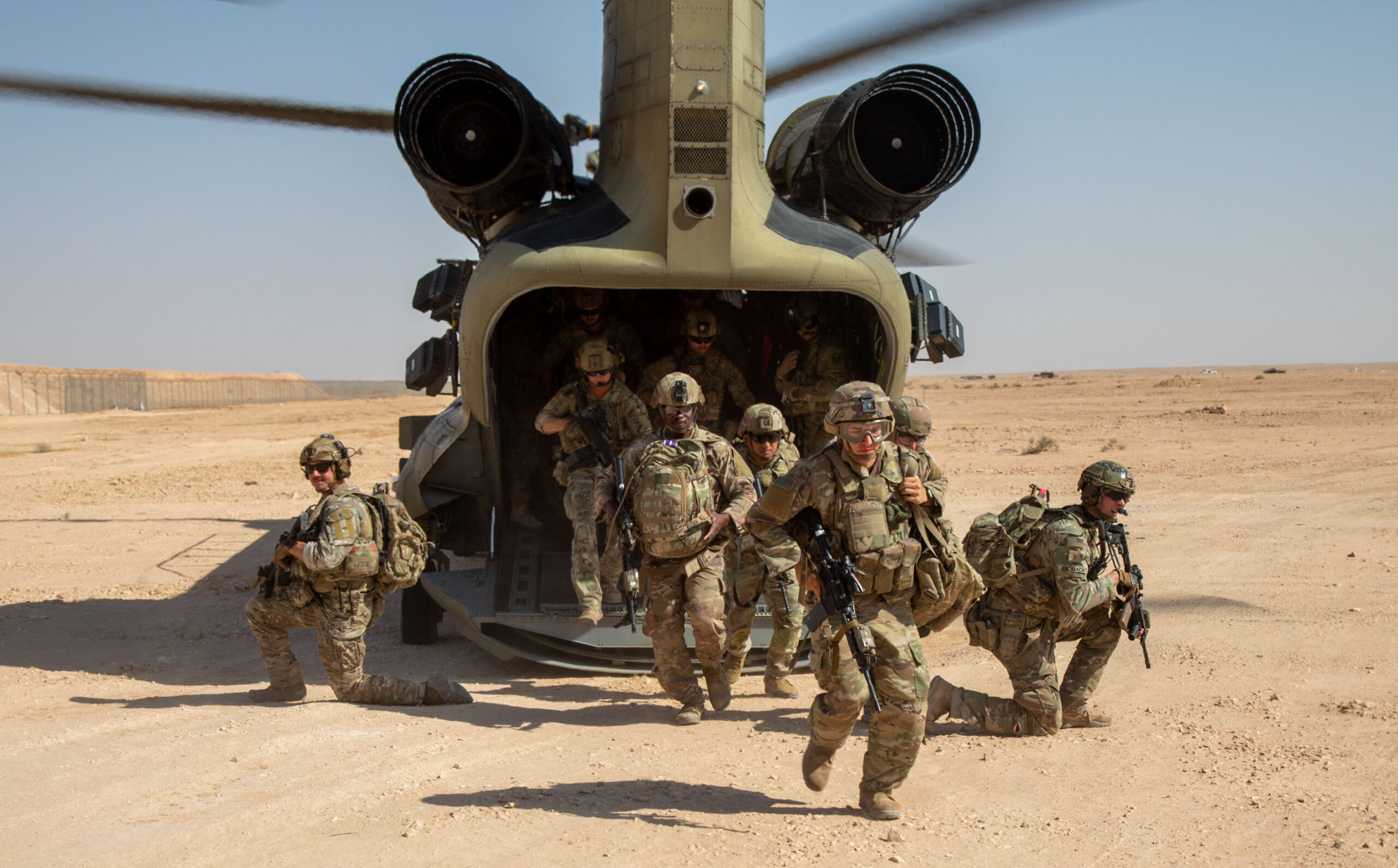

At least two U.S. troops have been diagnosed with traumatic brain injuries after a ballistic missile attack by Iranian-backed militias on an Iraq base over the weekend.
Those two injuries, the Pentagon said Monday, brings the total number of Americans injured in Iraq in Syria to 83 since October. Officials did not disclose details on the severity of the injuries.
The rocket and ballistic missile attack on al-Asad air base in Iraq’s western Anbar Province over the weekend was the latest of 151 separate attacks on US troops in the region, including at least 58 Iraq, according to a spokesperson for U.S. Central Command.
The Saturday attack appeared to be relatively large compared to others with ballistic missiles, which U.S. air defenses engaged.
“Most of the missiles were intercepted by the base’s air defense systems while others impacted on the base,” CENTCOM said in a statement. At least one Iraqi service member was wounded.
Brain injuries on the rise
The string of recent attacks on U.S. bases by rockets, drones and other indirect fire — weapons that cause large explosions rather than bullet-like direct injuries — has refocused attention on traumatic brain injuries, or TBIs, among U.S. troops.
TBIs are categorized as mild, moderate, or severe. Some mild TBI and concussion symptoms can appear right away, while other symptoms may not appear for hours or days after the injury. According to a July 2021 DOD study on TBI mitigation efforts, more than 426,000 U.S. troops suffered first-time TBIs in the two decades of war in Iraq and Afghanistan.
In Jan. 2020, after a similar attack with ballistic missiles launched by Iran more than 100 U.S. service members at al-Asad were diagnosed with mild traumatic brain injuries. The attack on the Al Asad military base in northern Iraq was in retaliation for the U.S. airstrike that killed Iranian Maj. Gen. Qasem Soleimani.
That May, 29 troops received Purple Hearts for the attack, the first large-scale awarding for Purple Hearts for TBIs
Air Force Central Command released testimonies by troops at the base during the attacks. As the loudspeaker blared across the base a warning of “Incoming,” soldiers and airmen retreated to bunkers, where they stayed for hours as the missiles rained down. Troops described ear ringing sensations and looming stress that led to one soldier losing considerable weight.
Leaders had hours to decide which airmen to evacuate and who should stay. Some troops left weapons behind in a panic while others had to prepare to defend the base.
“I was being forced to gamble with my members’ lives by something I couldn’t control,” Lt. Col. Staci Coleman, commander of the 443rd Air Expeditionary Squadron said at the time. “I was deciding who would live and would die. I honestly thought anyone remaining behind would perish. I didn’t believe anyone would survive a ballistic missile attack and it made me feel sick and helpless.”
Subscribe to Task & Purpose today. Get the latest military news and culture in your inbox daily.
Potentially concussive events
Pentagon rules say that troops exposed to an explosion or other violent event linked to TBI — a “potentially concussive event” in Pentagon language — are supposed to be evaluated and treated under the Department of Defense Policy Guidance for Management of Mild Traumatic Brain Injury/Concussion in the Deployed Setting.
The guidelines, which are mandatory for deployed commanders and medical staff, require those affected by a potentially concussive event to be medically evaluated as close to the time of injury as possible. Examples of events that fall under the rule include involvement in a vehicle blast, collision, or rollover; presence within 50 meters of a blast; direct blow to the head or witnessed loss of consciousness; and/or exposure to more than one blast event.
Concussive events are evaluated by medical personnel using what the Pentagon calls an I.E.D checklist, a name not taken from the commonly known acronym for improvised explosive devices but rather Injury/Evaluation/Distance. Troops are evaluated with “yes or no” answers to symptoms and specifics in the three categories.
Troops are asked:
- Injury: is physical damage to the body or a body part
- Evaluation: is the individual experiencing headaches and/or vomiting, ear ringings, amnesia/loss of consciousness, double vision or dizziness, or a general belief that something feels wrong
- Distance: is whether they were within 50 meters of the blast
Service members diagnosed with a mild TBI or concussion must have a minimum 24-hour recovery unless medical evaluations call for a longer rest period. Commanders can supersede the recommendation for mission needs.
Under DOD guidance, commands are required to send monthly reports on TBIs to the Joint Trauma Analysis and Prevention of Injury in Combat office, including date of the event, type of event, service member info, unit name, distance from the blast and disposition after a medical evaluation. If a soldier is delayed their 24-hour rest period, it must be noted in the monthly report, for example.
For a second diagnosed concussion within a year, return to duty is delayed for one week after symptoms resolve. If a troop has suffered three diagnosed mild TBI or concussions within 12 months, return to duty is delayed until a recurrent concussion evaluation is done.
Recovery time can depend on the number of potential TBI-inducing events and includes uninterrupted sleep and pain management, according to the DOD regulation. Sports and activities with concussion risks are prohibited until cleared by a licensed physician.
As of December, five troops had received Purple Hearts for the recent string of Iraq and Syria attacks which began after the U.S. pledged support for Israel in its war against Hamas.
The latest on Task & Purpose
- Navy fires captain of guided missile submarine after DUI arrest
- How many soldiers are in a platoon? The U.S. Army by the numbers
- The Navy relieved 16 commanding officers in 2023
- Bradley Fighting Vehicles are taking out modern tanks in Ukraine
- Army CID investigating daycare incident at Carlisle Barracks